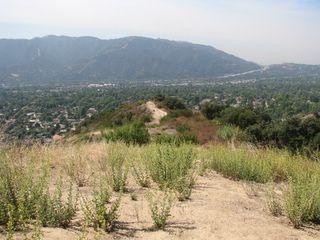
Down the hill you can see a burnt area from a different. smaller fire. The fire burned in grasses and tall shrubs that are present because an unnatural frequency of fires has killed the large shrubs. It is called 'type conversion'. Much of area around southern California is unlike most other areas in that it has too many fires, rather than too few.

























